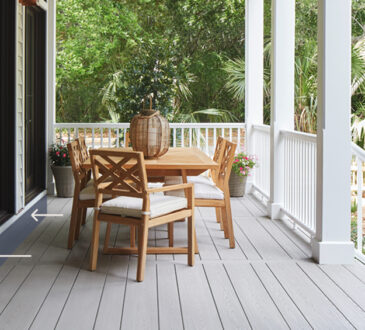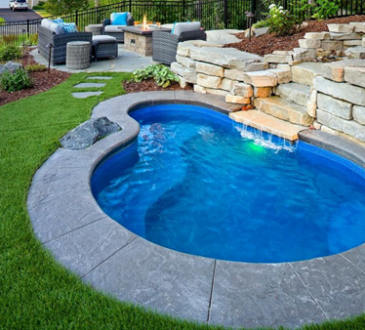Ensuring Safety and Comfort: The Importance of Commercial Waterproof Sealing in Senior Living Buildings

In the realm of construction and facility management, the importance of commercial waterproof sealing cannot be overstated, especially when it comes to senior living buildings. These structures are not merely buildings; they are homes to many elderly individuals who deserve the utmost comfort, safety, and security. Waterproof sealing plays a pivotal role in maintaining these standards, protecting the building’s integrity, and ensuring a healthy living environment for its residents.
Understanding Commercial Waterproof Sealing
What is Commercial Waterproof Sealing?
Commercial waterproof sealing involves the application of specialized materials and techniques to prevent water infiltration into a building. This process is critical for protecting the structural components, such as foundations, walls, roofs, and basements, from water damage. Waterproof sealing is particularly vital in commercial settings where large-scale operations and maintenance are required to ensure longevity and safety.
Methods and Materials Used
Various methods and materials are employed in commercial waterproof sealing, including:
- Membrane Systems: These involve applying liquid or sheet membranes that form a barrier to water penetration.
- Sealants and Caulks: Used to seal joints, cracks, and seams.
- Cementitious Waterproofing: A mix of cement and waterproofing compounds applied to concrete surfaces.
- Bituminous Coating: A flexible coating used on areas like basements and foundations.
Each method has its specific application depending on the building’s requirements and the area needing protection.
The Unique Needs of Senior Living Buildings
Safety and Health Considerations
Senior living buildings cater to elderly individuals, many of whom may have compromised immune systems and mobility issues. Ensuring a dry, mold-free environment is crucial for their health. Water infiltration can lead to mold growth, which can cause respiratory issues, allergies, and other health complications. Effective commercial waterproof sealing prevents such hazards, promoting a healthier living space.
Comfort and Quality of Life
The comfort of residents in a senior living building is paramount. Leaks and dampness can create uncomfortable living conditions, potentially leading to a decline in the quality of life for residents. By employing robust waterproofing measures, facility managers can ensure that rooms remain dry, warm, and comfortable, contributing to the overall well-being of the occupants.
Structural Integrity and Maintenance
Senior living buildings are significant investments, and maintaining their structural integrity is essential for long-term sustainability. Water damage can weaken foundations, walls, and roofs, leading to costly repairs and potential safety hazards. Implementing effective commercial waterproof sealing helps preserve the building’s integrity, reducing maintenance costs and ensuring the safety of its residents.
Benefits of Commercial Waterproof Sealing in Senior Living Buildings
Prolonging Building Lifespan
One of the primary benefits of commercial waterproof sealing is the extension of the building’s lifespan. Waterproofing protects critical structural components from water-induced wear and tear, preventing premature deterioration and extending the building’s functional life.
Cost Savings
While the initial investment in commercial waterproof sealing might seem significant, it yields substantial long-term savings. By preventing water damage, facility managers can avoid costly repairs and replacements. Additionally, a well-maintained building is less likely to suffer from structural failures, reducing emergency repair expenses.
Enhanced Resident Satisfaction
Satisfied residents are the cornerstone of successful senior living facilities. Ensuring their living environment is safe, dry, and comfortable is crucial for their happiness and well-being. By prioritizing commercial waterproof sealing, facility managers demonstrate a commitment to high-quality living standards, enhancing resident satisfaction and retention.
Implementing Commercial Waterproof Sealing: Best Practices
Regular Inspections and Maintenance
To ensure the effectiveness of waterproof sealing, regular inspections and maintenance are necessary. Identifying potential issues early allows for timely interventions, preventing minor problems from escalating into major concerns. Scheduled maintenance ensures that all sealing systems remain in optimal condition.
Choosing the Right Materials and Techniques
Not all waterproofing solutions are suitable for every building. It’s essential to select materials and techniques that align with the specific needs of the senior living building. Consulting with experts in commercial waterproof sealing can provide valuable insights and ensure the correct application.
Training and Awareness
Staff training and awareness are crucial components of an effective waterproofing strategy. Maintenance staff should be well-trained in identifying signs of water infiltration and understanding the importance of waterproof sealing. This knowledge enables prompt action, ensuring the building remains protected at all times.
Conclusion
In conclusion, the importance of commercial waterproof sealing in senior living buildings cannot be overstated. It is a critical measure that ensures the safety, comfort, and well-being of elderly residents, while also preserving the structural integrity and value of the building. By prioritizing waterproof sealing, facility managers can create a healthier, more comfortable living environment, enhance resident satisfaction, and achieve long-term cost savings. Ensuring the right practices and materials are used will go a long way in maintaining these standards, making commercial waterproof sealing an indispensable aspect of senior living building management.



